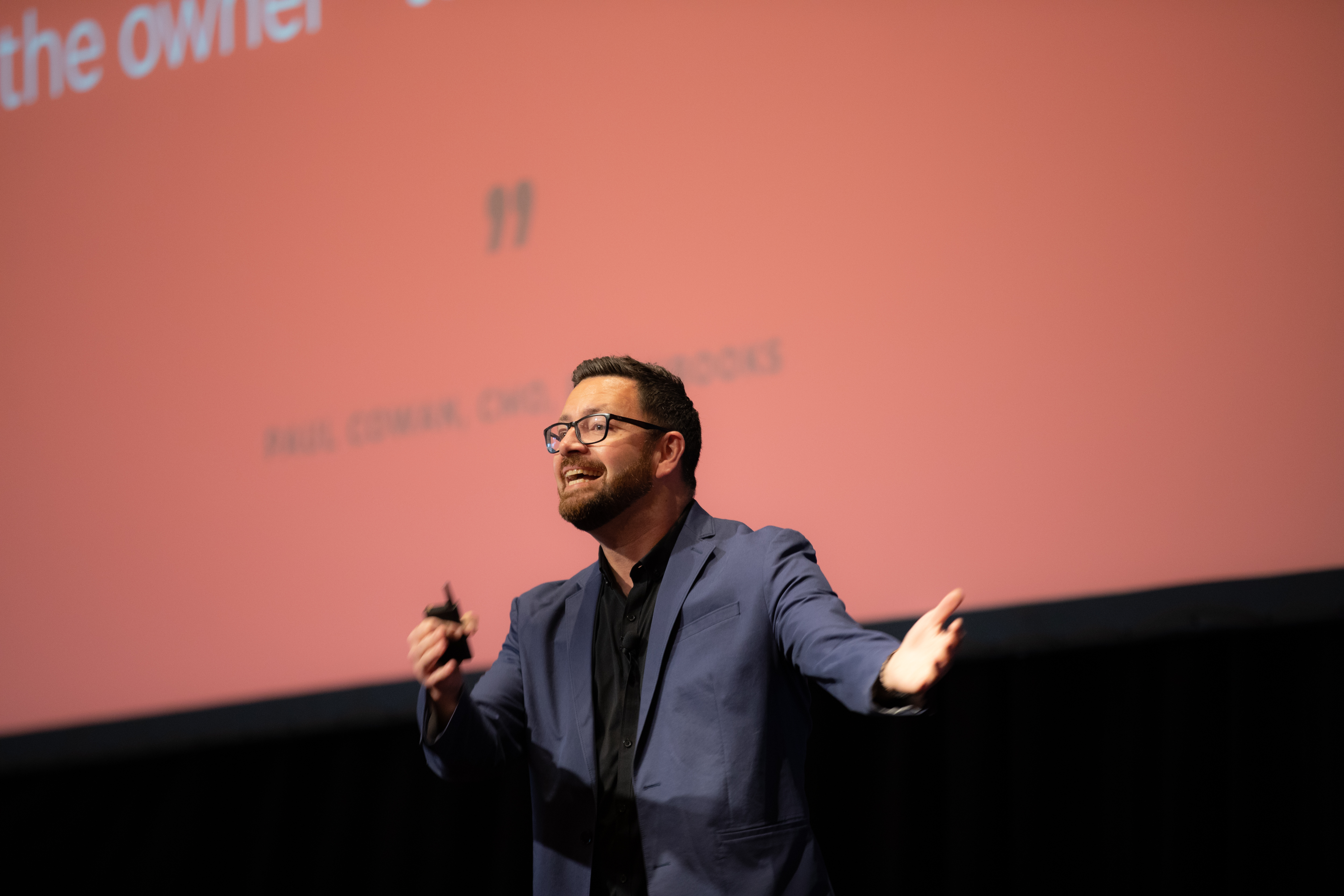#B2BSMX Recap: Marketers Turn To Brain Science For Stand-Out Branding Strategies
- Written by Michael Rodriguez
- Published in Industry Insights
As the in-person B2B Sales & Marketing Exchange (#B2BSMX) entered its second day, organizations, experts and practitioners continued to share their knowledge and experiences about modern marketing and sales in the age of digital transformation.
One of the key topics from this year’s #B2BSMX is the resurgence of brand marketing and its impact on awareness, marketing and content. Day two featured keynotes from Nick Westergaard of MarketingProfs and Carmen Simon of Corporate Visions that explored how brain science can help organizations enhance their brand image and create engaging customer-centric content.
Appealing To The Brain To Create Memorable Brands
In a keynote titled “The Neuroscience Of Decision Making,” Simon dove into the brain’s reaction to typical marketing pitches. She emphasized that savvy marketers will take advantage of the brain’s processes of memory and emotion to build their brand image.
“Everyone that you're addressing personally or professionally has a brain,” Simon explained. “If you understand how the brain works, you can reach anyone. From the angle of how the brain works, the only thing that's most important is where we make our next move and taking advantage of this to convince buyers to move towards you.”
In a separate keynote titled “Brand Now: How To Build Brand While Driving Demand,” Westergaard highlighted storytelling’s impact on the brain and discussed how brands can use storytelling to increase buyer interest and build brand identity. He explained that presenting information as an unfolding story makes it more memorable, and brands can leverage this “brand story” to garner interest and increase engagement.
We're getting science-y over here in Boston at #B2BSMX as @areyoumemorable kicks off the afternoon sessions with "The Neuroscience of Decision-Making" by walking us through the three pathways to decision-making @corpv
— B2B Sales & Marketing Exchange (@B2BMX) August 10, 2021
The easiest way to create a brand story is to craft a unified voice that’s unique to a brand’s experience and values. Westergaard said that a brand’s story should solely revolve around an organization’s experiences with customers and focus on how the brand’s value impacted the clients.
“We as brand builders can harness the power of story to help us transmit meaning,” he explained. “So, when it comes to creating a brand story, ask yourself, ‘What is your brand's core story?’ And the answer should always be your customer’s story. And when it is, find the customer story that works for you and communicate it in a way that resonates with your audience.”
Building Brand Through Unique, Customer-Centric Content

Westergaard also spoke on the relationship between brand building and content, emphasizing that organizations need a strong content marketing strategy that is aware of what a brand is and the customers they serve.
Although a diverse content pool is a common route marketers take, Westergaard instead suggested creating layered content that caters to buyers at every stage of their journey. For example, brands should make relevant content for “skimmers” that only want to get the short details and “deep-dive” content for buyers who want to learn more about the brand and its offering. This allows brands to broadcast their brand message at different intensities to build trust with new prospects and existing accounts.
“Good content should be both brand-centric and customer-aware,” said Westergaard. “You have to think about the levels of content that you're creating. More isn't always better; sometimes more is just more. You can simplify or exaggerate your content based on the level of branding you are going for.”
.@nickwestergaard is closing out day two here in Boston going over the specifics of building a brand while driving demand #B2BSMX @MarketingProfs pic.twitter.com/LDjupscwZo
— B2B Sales & Marketing Exchange (@B2BMX) August 10, 2021
Simon also dove into how exaggeration can help companies develop more memorable content, explaining that the brain prefers uniform and simple images. She pointed to brands like Salesforce and HubSpot that build their logos with visually appealing images to increase engagement.
Despite the success of simplicity, Simon stressed that brands shouldn’t be afraid to exaggerate images as breaking uniformity is a powerful engagement generator. The brain uses a lot of cognitive energy to process complex information, which creates a longer-lasting impression.
“Exaggeration is highly underrated in business branding and content,” said Simon. “If you really want to draw a strong reaction from someone's brain and some movements, then here we have an opportunity. The reason why exaggeration works is because it evokes a reflexive reaction from someone, and they will not have to exert a lot of energy to move in the favor of your brand materials.”
If you’re craving more #B2BSMX takeaways, check out our recap on how marketers are revamping their ICPs to fix their go-to-market strategies with Gartner’s Craig Rosenberg and Terminus’ Sangram Vajre.


